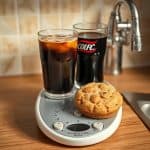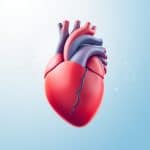Calorie Deficits & Weight Loss: Myths, Facts, and the Role of Strength Training

Introduction
“Eat less, move more” is technically true — but incomplete. A calorie deficit is necessary for weight loss, but what you eat (macros), how you train, and how you recover determine whether you lose fat, muscle, or both. This article separates common myths from real, actionable facts.
Myth 1: Weight Loss Is Just About Eating Less
Extreme diets may show quick numbers on the scale but often sacrifice muscle, energy, and long-term success.
Myth 2: All Calories Are the Same
Technically a calorie is a unit of energy — but your body handles different types of calories differently.
- Protein has a higher thermic effect and helps preserve muscle.
- Fiber-rich carbs increase satiety and stabilize blood sugar.
- Highly processed foods are easier to overeat and may increase hunger signals.
Myth 3: Cardio Is the Best Way to Lose Weight
Cardio burns calories, but resistance training preserves and builds muscle — which helps maintain resting metabolic rate. Combine both for best results.
The Role of Macros
Balance matters:
- Protein: Aim for 1.2–2.2 g/kg body weight per day to support muscle retention.
- Carbs: Prioritize whole, fiber-rich carbs around training for performance.
- Fats: Include healthy fats for hormones and satiety (e.g., olive oil, nuts).
Practical Tips for a Healthy Calorie Deficit
- Prioritize protein and vegetables at every meal.
- Lift weights 2–4x/week to preserve muscle.
- Stay active daily — small steps add up.
- Prioritize sleep (7–9 hours) and stress management.
- Track progress weekly (body composition or photos), not daily weight.
Bottom Line
Calories matter — but so do quality, macros, and training. For lasting fat loss with minimal muscle loss, use a moderate deficit, eat sufficient protein, and prioritize strength training and recovery.
Dr. Ilhem Remmouche a board-certified physician in internal medicine and obesity medicine, serving as a senior author/contributor at LifeInBalanceMD.
Note: Content is educational and not a substitute for personalized medical care.
Life in Balance MD is led by Dr. Amine Segueni, a board-certified physician dedicated to delivering clear, evidence-based health insights. His passion is helping readers separate facts from myths to make smarter, healthier choices. Content is for educational purposes only and not a substitute for medical advice.










